
The Week Junior Science+Nature UK
TITANS
The biggest dinosaurs grew to truly epic proportions. Peter Gallivan tells the super-sized tale of these giant reptiles and discovers why they grew so large.
5 min |
Issue 79

The Week Junior Science+Nature UK
Gladys West
Meet the hidden figure behind the navigation system in your smartphone.
3 min |
Issue 79

How It Works UK
Ancient Egyptians may have used a hydraulic lift to build the first pyramid
Ancient Egyptians may have used an elaborate hydraulic system to construct the world's first pyramid. Known as the Pyramid of Djoser, the step pyramid was built around 4,700 years ago on the Saqqara plateau, an archaeological site in northern Egypt.
2 min |
Issue 194

How It Works UK
Webb confirms the earliest known galaxy is erupting in stars
The James Webb Space Telescope has spotted the earliest galaxy ever seen, and its unusually bright light is coming from a bizarre frenzy of star formation. Named JADES-GS-z14-0, the galaxy formed at least 290 million years after the Big Bang and contains stars that have been bursting into life since an estimated 200 million years after our universe began.
1 min |
Issue 194

How It Works UK
Sapphires form inside volcanoes, not deep in the mantle
Brilliant-blue sapphires look like bits of sky brought down to Earth, but a new study finds these gemstones are from a different boundary: the one between the planet's crust and magma welling up from the mantle, Earth's middle layer. Sapphires have been thought to form in the mantle itself or in the lower sections of the crust.
2 min |
Issue 194

How It Works UK
WHAT IS SUNBURN?
How solar rays can leave us red, sore and irritated
2 min |
Issue 194

How It Works UK
URBAN WILDLIFE
How wild animals have evolved to thrive alongside humans in towns and cities
3 min |
Issue 194

How It Works UK
BUILDING ONE WORLD TRADE CENTER
One World Trade Center rose from the ashes of the Twin Towers. Now, as the tallest building in New York City, it looks to the skies and the future. Here's how this sustainable and secure record-breaker was built
2 min |
Issue 194

How It Works UK
LIFTING THE LID ON ANTARCTICA
What was the coldest continent like without ice?
3 min |
Issue 194

How It Works UK
NEANDERTHAL LIVING
Why our prehistoric cousins were pioneers, not clueless apes
3 min |
Issue 194

How It Works UK
RESCUE IN SPACE
Fortunately, space emergencies are a rare occurrence, but astronauts and space agencies need to be prepared for any eventuality that might arise
6 min |
Issue 194
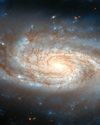
All About Space UK
Hubble spots a stunning spiral galaxy shining in the 'Little Lion'
From its vantage point in low-Earth orbit, the Hubble Space Telescope recently captured an intricate portrait of NGC 3430, a classic spiral galaxy that resides 100 million light years from Earth in the constellation of Leo Minor.
1 min |
Issue 160
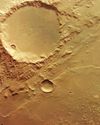
All About Space UK
Mars Express takes a deep dive into an ancient lake
A Mars orbiter has taken a deep dive into an ancient Martian lake - figuratively, at least. Larger than any lake currently on Earth, the dried-up remnants of this ancient lakebed were captured in incredible detail by the European Space Agency's (ESA) Mars Express spacecraft, which has been orbiting the Red Planet since 2003. \"This patch of Mars - shown in a new view from Mars Express' High-Resolution Stereo Camera - is known as Caralis Chaos,\" ESA scientists said. \"We believe that water, and a lot of it, once existed here.\"
1 min |
Issue 160
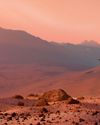
All About Space UK
An ocean's worth of water may be buried within Mars, but can we get to it?
Enough water to cover the surface of Mars has been discovered within the crust of the Red Planet by NASA's InSight mission. However, the ocean is buried several kilometres underground. Insight touched down in the Elysium Planitia region on Mars in November 2018 and maintained its mission for four years.
2 min |
Issue 160
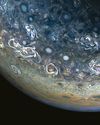
All About Space UK
Jupiter's surreal clouds swirl in a new view from NASA's Juno probe
Vivid clouds swirl across Jupiter's skies like colourful brush strokes across a painting in a new photo from NASA's Juno spacecraft.
1 min |
Issue 160

All About Space UK
A NASA TELESCOPE MAY HAVE FOUND ANTIMATTER ANNIHILATING IN POSSIBLY THE BIGGEST EXPLOSION SINCE THE BIG BANG
The massive explosion was captured in 2022
3 min |
Issue 160

All About Space UK
Jameel Janjua "This is how we get to Mach 3”
Jameel Janjua made it to the bitter end in a Canadian government astronaut selection in 2009, but wasn't chosen. He found a different path to space through Virgin Galactic
7 min |
Issue 160
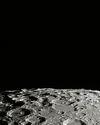
All About Space UK
THE MOON'S THIN ATMOSPHERE IS MADE BY CONSTANT METEORITE BOMBARDMENT
While the solar wind also contributes to the atmosphere, meteorites are the main culprit
3 min |
Issue 160
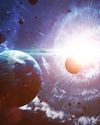
All About Space UK
INTERSTELLAR TRAVEL AND HOW TO BECOME A SPACE TOURIST
Having explored much of the Solar System, attention is now turning to the stars beyond
6 min |
Issue 160

All About Space UK
WHEN BLACK HOLES TURN WHITE
Can bouncing black holes help physicists find the ultimate theory of everything?
8 min |
Issue 160
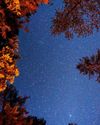
All About Space UK
15 AUTUMN STARGAZING TARGETS
Go on a night-sky treasure hunt as the brighter evenings give way to the cooler months
4 min |
Issue 160
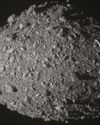
All About Space UK
Weird 'watermelon-shaped' asteroids like Dimorphos and Selam may finally have an explanation
The unusual shapes of the tiny asteroids Dimorphos and Selam have perplexed astronomers for years, but a new study finally explains how they got so strange. It also suggests these bizarrely shaped 'moonlets' may be more common than scientists thought.
2 min |
Issue 160

All About Space UK
Ghostly 'zodiacal light' glows above the Very Large Telescope in Chile
A newly released image shows a colourful haze glowing above the Paranal Observatory in the Chilean Atacama Desert at sunset. The European Southern Observatory's (ESO) Very Large Telescope (VLT) stands beneath a star-studded sky illuminated by a phenomenon known as zodiacal light, which is observed as a faint glow of diffuse light in the sky scattered by interplanetary dust.
1 min |
Issue 160
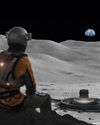
All About Space UK
NASA may use lasers to livestream from the Moon one day
Getting a live play-by-play of astronauts in space during future Artemis Moon missions could eventually be possible thanks to laser technology. NASA is testing a space communication method that, instead of using radio waves, uses a laser beam to connect Earth with astronauts on the Moon.
2 min |
Issue 160

How It Works UK
The Space Force is launching lasers into orbit
The Space Force aims to better pinpoint the location of Earth's true centre using lasers on GPS satellites, slated to launch in 2025. A set of Laser Retroreflector Arrays, or LRAS, will be installed onto two GPS III satellites, SV9 and SV10, as part of NASA's Space Geodesy Program. The lasers are designed to make precise sub-centimetre measurements using a technique called Satellite Laser Ranging, which will allow researchers to more accurately determine Earth's centre.
1 min |
Issue 194

How It Works UK
Eating too much sugar may accelerate cellular ageing
A nutrient-rich diet with few added sugars may slow the rate of biological ageing in women. Scientists found that middle-aged women who ate more foods packed with vitamins, minerals and antioxidants had 'younger looking' cells than those who consumed less nutrient-rich diets.
2 min |
Issue 194
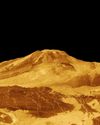
All About Space UK
MYSTERIES OF THE UNIVERSE WHY IS VENUS SO DRY?
A new study reckons the answer lies high in the Venusian atmosphere
7 min |
Issue 160

How It Works UK
Scientists achieve record-breaking data transmission speeds
Researchers have achieved record-breaking fibre-optic data transfer speeds of 402 terabits per second, roughly 1.6 million times faster than typical home broadband speeds. Scientists at Aston University in the UK achieved these new speeds by tapping into all the wavelength bands used in commercially available fibreoptic cables. Only one or two bands are used in most fibre-optic broadband connections.
2 min |
Issue 194

How It Works UK
T. rex could have been 70 per cent bigger
There's no denying that Tyrannosaurus rex was one of the biggest dinosaurs to ever walk the planet. But how big could this dinosaur get? In a new investigation, researchers attempted to answer that. Palaeontologists from the Canadian Museum of Nature in Ottawa estimated that the largest T. rex may have tipped the scales at a whopping 15,000 kilograms, making it heavier than an average school bus, which weighs about 11,000 kilograms.
1 min |
Issue 194

How It Works UK
BECOME A SMARTPHONE SCIENTIST
Amazing tips and tricks to transform your smartphone into a bug-finding, star-spotting, data-gathering device
2 min |